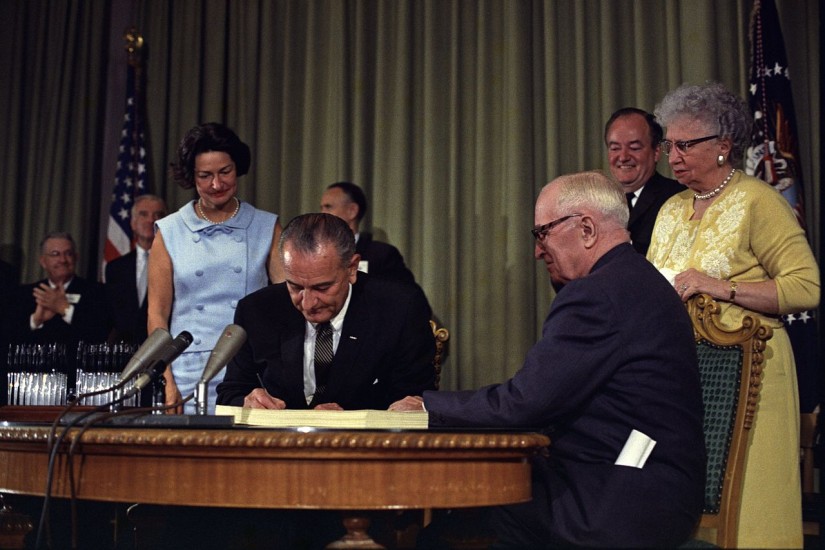The principle that separate is unequal was then adopted into Title VI of the Civil Rights Act. It clarified plain and simple that hospitals could not discriminate if they wanted federal money.
“Which on the face of it should have ended the racial policies of about 6,000 southern health facilities, hospitals, clinics and the like,” Meltsner said.
“But really almost nothing happened,” he said.
At that time, hospitals didn’t rely heavily on federal money. And without any major penalties, they didn’t have a big motivation to change, to let black patients or doctors through their doors. Meltsner said lawyers would have had to take each and every health facility that continued to segregate to court, and that would require resources they didn’t have.
In 1965, the landscape radically changed, when “along came a gift,” Meltsner said.
Medicare was the gift.
President Johnson signed the massive health legislation into law on July 30, 1965.
Medicare was the new health care program that would cover seniors and Americans with disabilities. Under the program, the government would now generously pay for the care of millions of people.
This new-found health care funding had the potential to change everything, to tear down hospital segregation. But that would require more than just a rule on the books. A tiny government unit took on the responsibility.
Some say it was a David vs. Goliath fight.
Peter Libassi led that unit, inside the Department of Health Education and Welfare, or HEW. Today he lives in a a retirement home in Connecticut. He says a little civil rights unit of just six people was tasked with creating and enforcing the rules that hospitals would need to follow to be eligible for the lucrative new medicare funds.
“I’m talking about 25 percent of their income they were hoping to get from hew that year,” Libassi said.
The core rule was that no hospital would get any funding until they were completely integrated. No ifs, ands, or buts.
